Digital Camera World Verdict
When you’re on walkabout or travelling, it pays to take a single lens that suits most shooting scenarios. With a generous zoom range of 27-210mm in full-frame terms, this DX lens for Nikon’s APS-C format DSLRs covers most eventualities. Supplied as a kit option with some of the company’s mid-range DSLRs, this lens also makes a wise buy in its own right, thanks to good overall performance and image quality, and effective 4-stop optical stabilization.
Pros
- +
Generous zoom range
- +
4-stop Vibration Reduction
- +
Compatible with older DSLRs
Cons
- -
Lackluster edge-sharpness
- -
Noticeable color fringing if uncorrected
- -
HB-32 hood sold separately
Why you can trust Digital Camera World
The Nikon AF-S DX 18-140mm f/3.5-5.6G ED VR is by far the largest of Nikon’s kit zoom lenses for DX format DSLRs and is also 2.5x to 3.5x the weight, at 490g. The main contributing factor is its upsized zoom range, which stretches from 27-210mm in full-frame terms. Two concentric inner barrels physically stretch the length of the lens to achieve this, although focusing is fully internal.
Specifications
Mount: Nikon F (DX)
Full-frame: No
Autofocus: Yes
Stabilization: Yes
Lens construction: 17 elements in 12 groups
Angle of view: 76 to 11.5 degrees
Diaphragm blades: 7
Minimum aperture: f/22-38
Minimum focusing distance: 0.45m
Maximum magnification ratio: 0.23x
Filter size: 67mm
Dimensions: 78x97mm
Weight: 490g
Key features
Autofocus is driven by a conventional ring-type ultrasonic system, featuring the usual full-time manual override. Switches are on hand for auto/manual focusing and for VR on/off, and the aperture is controlled via a mechanical lever. This makes the lens Nikon’s only DX format standard ‘kit’ zoom that’s fully compatible with the whole back catalogue of DSLRs. It’s also the only one that features a weather-sealed metal mounting plate.
The optical path has no less than 17 elements and features one aspherical element and one ED (Extra-low Dispersion) element. Nikon’s conventional Super Integrated Coating is applied to reduce ghosting and flare.
Vibration Reduction is rated as having a 4-stop effectiveness but lacks the additional ‘Sport’ or ‘Active’ modes often featured in Nikon’s more up-market lenses. A petal shaped HB-32 hood is available but you have to buy this separately, as it’s not supplied with the lens.
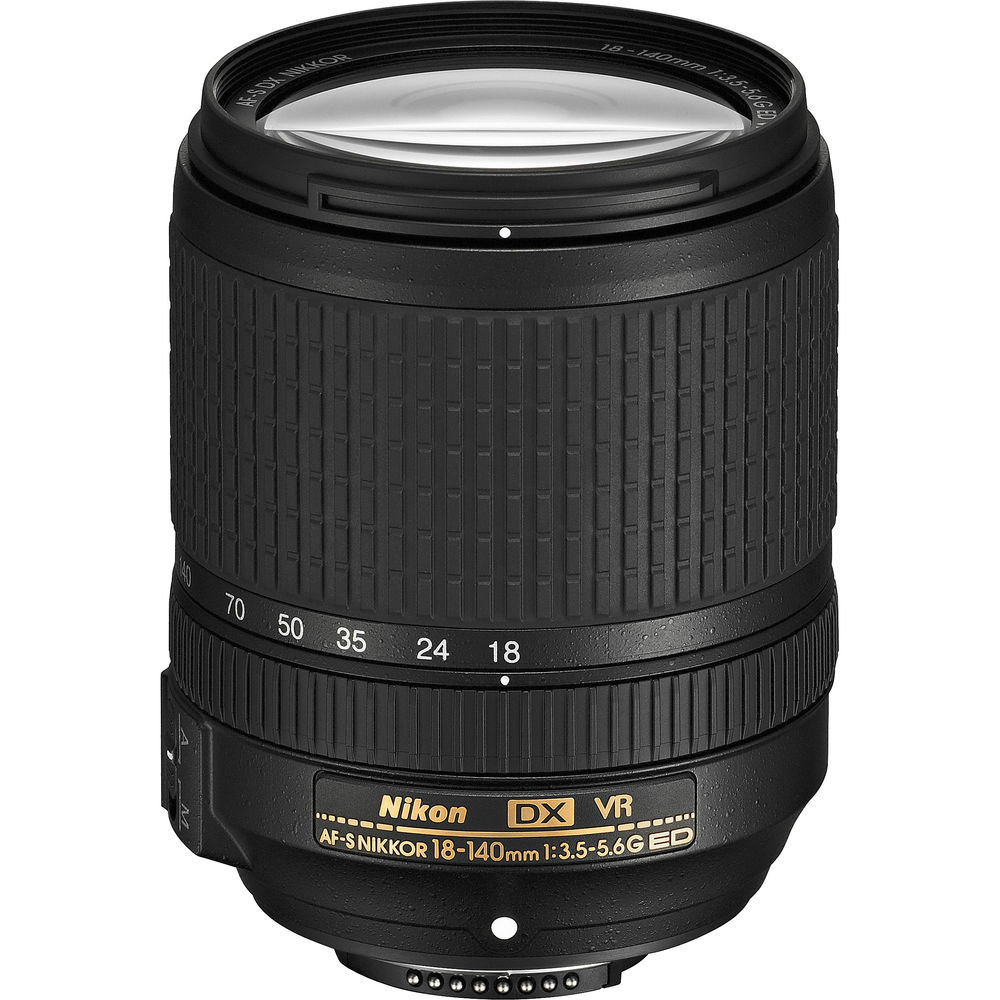
Performance
The ring-type ultrasonic autofocus is quick and very quiet although, as usual with this type of system, it lurches from one position to another thus precluding smooth autofocus transitions when shooting video. VR lives up to its 4-stop billing and resistance against ghosting and flare is pretty good.
Center-sharpness is mostly very respectable but edge-sharpness is comparatively lackluster. Color fringing and distortions can also be very noticeable, especially when using the lens with older Nikon DSLRs that lack automatic in-camera corrections.
Lab results
We run a range of lab tests under controlled conditions, using the Imatest Master testing suite. Photos of test charts are taken across the range of apertures and zooms (where available), then analyzed for sharpness, distortion and chromatic aberrations.
We use Imatest SFR (spatial frequency response) charts and analysis software to plot lens resolution at the center of the image frame, corners and mid-point distances, across the range of aperture settings and, with zoom lenses, at four different focal lengths. The tests also measure distortion and color fringing (chromatic aberration).
Sharpness:
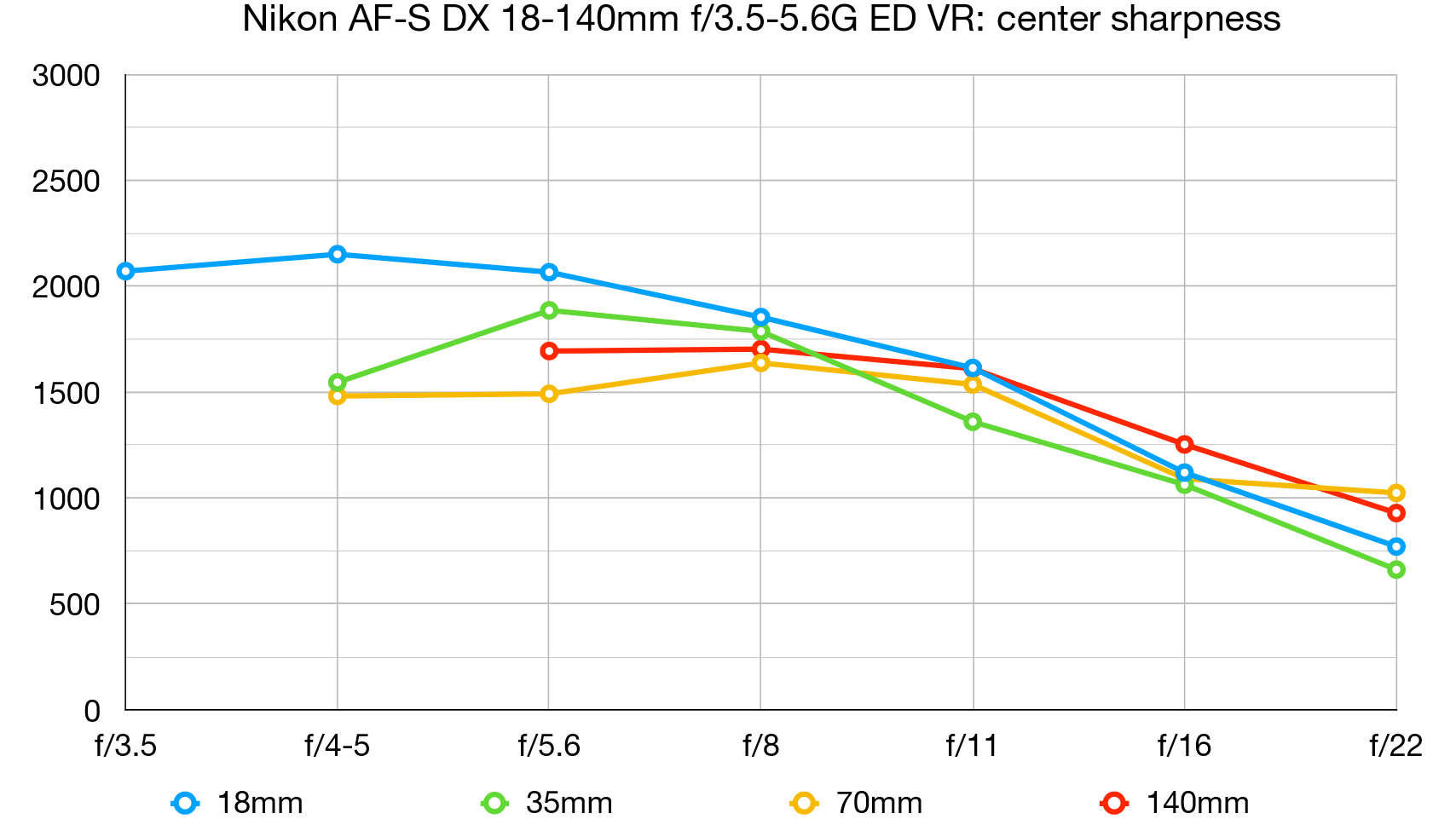
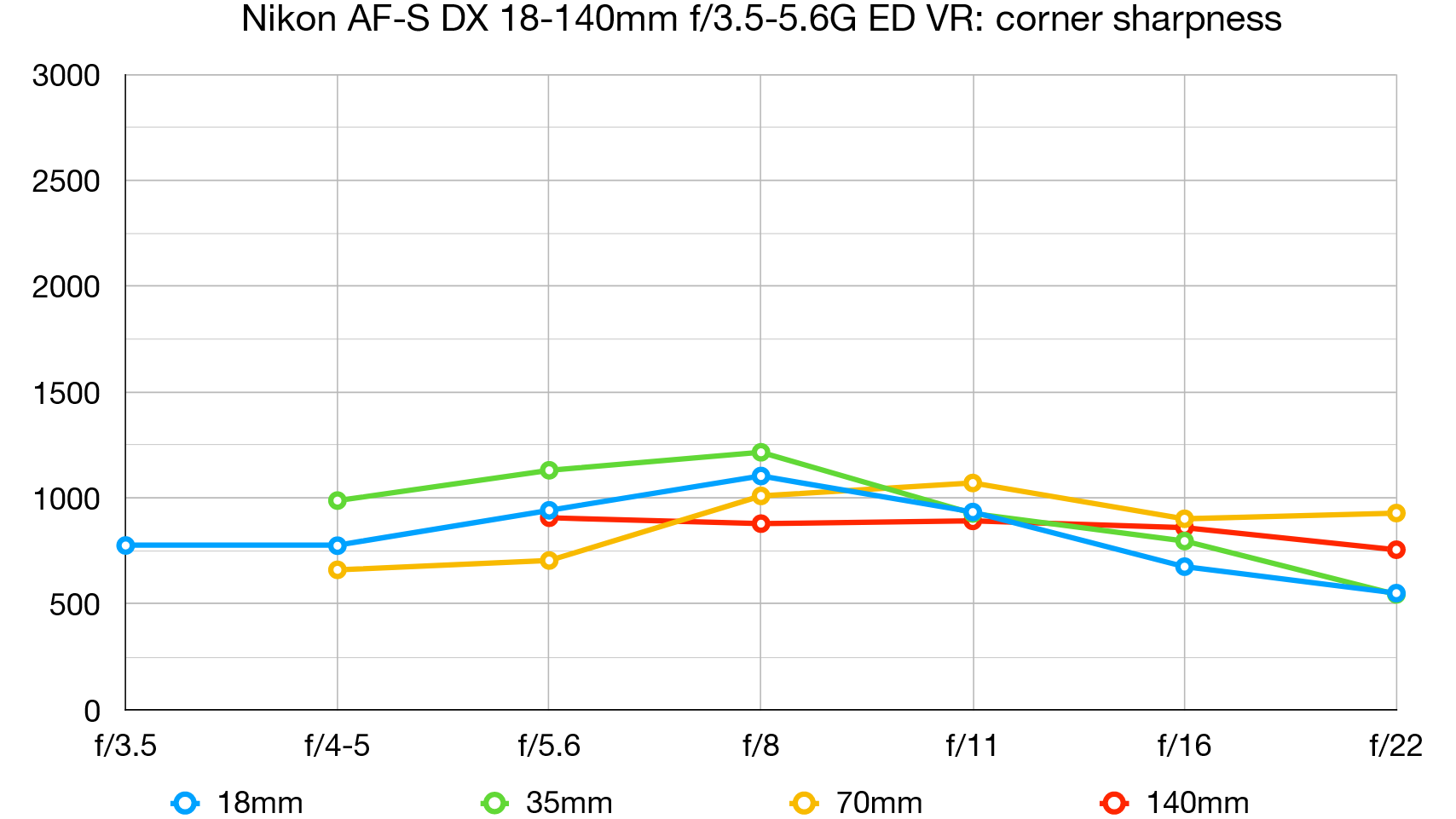
Apart from a dip around the 70mm mark, center-sharpness is pretty good throughout the zoom range. Edge-sharpness is relatively disappointing.
Fringing:
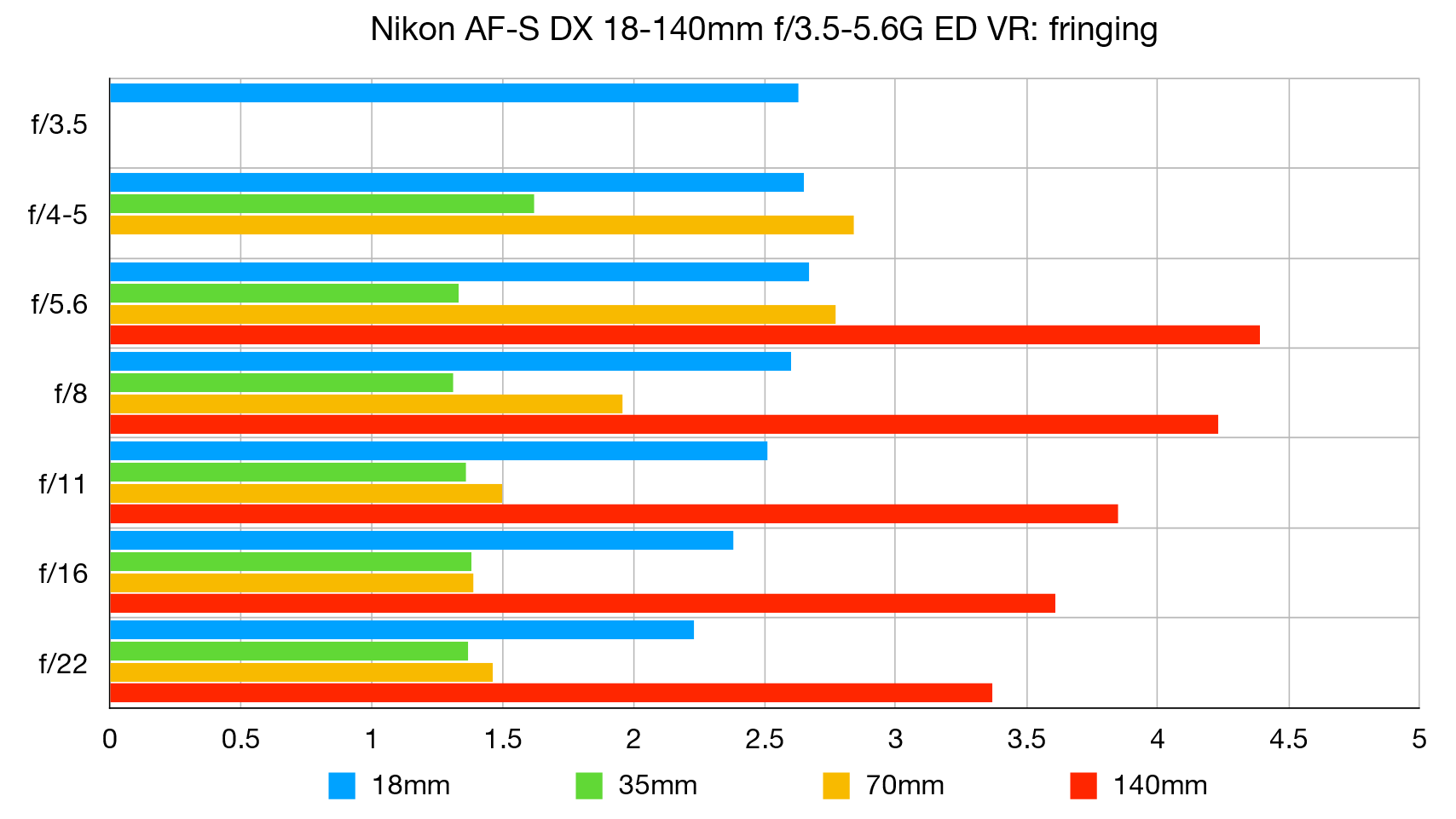
Color fringing can be very noticeable, especially at the long end of the zoom range, when using early Nikon DSLRs that lack in-camera correction.
Distortion:
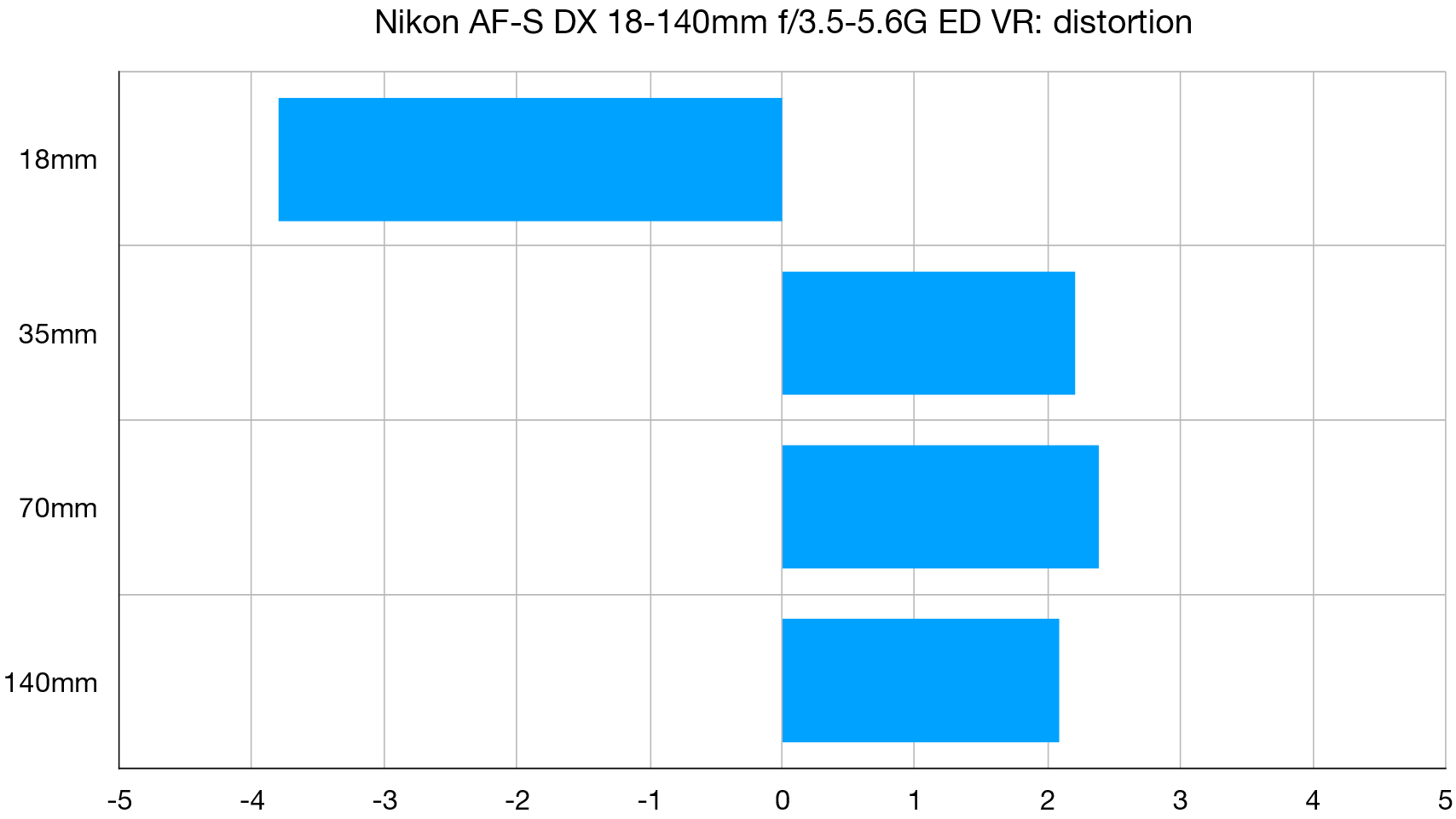
When uncorrected, barrel distortion is quite severe at the shortest focal length and pincushion is evident in the 35-140mm sector of the zoom range.
Verdict
When you’re on walkabout or travelling, it pays to take a single lens that suits most shooting scenarios. With a generous zoom range of 27-210mm in full-frame terms, this DX lens for Nikon’s APS-C format DSLRs covers most eventualities. Supplied as a kit option with some of the company’s mid-range DSLRs, this lens also makes a wise buy in its own right, thanks to good overall performance and image quality, and effective 4-stop optical stabilization.
Read more:
• Best camera lenses to get
• Best Canon lenses
• Best Nikon lenses
• Best Sony lenses
Matthew Richards is a photographer and journalist who has spent years using and reviewing all manner of photo gear. He is Digital Camera World's principal lens reviewer – and has tested more primes and zooms than most people have had hot dinners!
His expertise with equipment doesn’t end there, though. He is also an encyclopedia when it comes to all manner of cameras, camera holsters and bags, flashguns, tripods and heads, printers, papers and inks, and just about anything imaging-related.
In an earlier life he was a broadcast engineer at the BBC, as well as a former editor of PC Guide.


